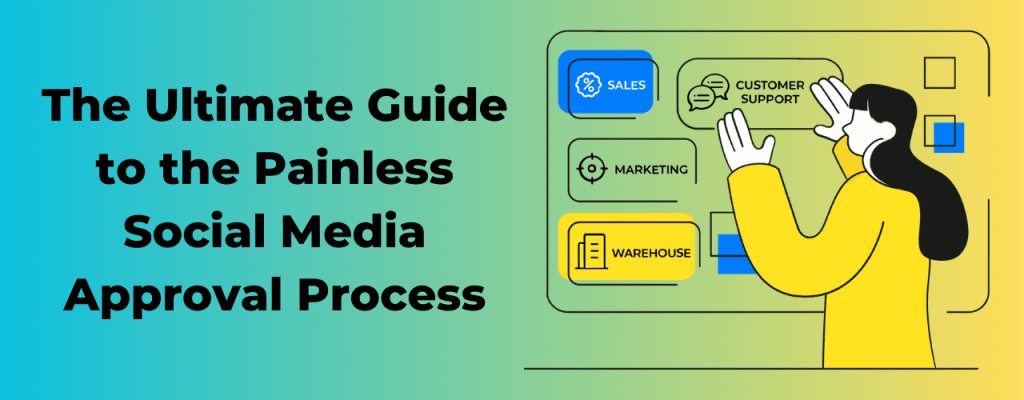
Poorly managed cash flow is the most common and fatal of all ecommerce finance mistakes. It’s tricky to get it right (we’ll explore why later in this guide), but it’s by no means impossible.
There are measures you can take to make sure your store doesn’t become one of the many — often highly profitable — ecommerce businesses that succumb to cash flow problems. But first, let’s dig a little deeper into the issue itself.
What is cash flow for ecommerce businesses?
Cash flow is the balance over any specified period of time between the money coming into your ecommerce store through sales and the money being spent. It’s different from profit and loss, which will settle over time to give a true picture of your profitability.
Let’s say you have £5,000 in the bank on Monday and you’re expecting to receive £10,000 from your payment gateway on Friday. All good, right? Except for the fact you need to pay your manufacturer £4,000 on Tuesday and send £3,000 to GoogleAds on Wednesday. You’re profitable, but you have cash flow problems.
Now widen that example over a longer period or for larger amounts of money. It’s easy to see why cash flow issues put many ecommerce stores out of business. That’s why managing ecommerce cash flow is vital. Let’s take a look at how to do it.
Cash flow planning
With suppliers to pay, returns to handle, and many more factors at play, including regular cash fluctuations, financial planning isn’t easy.
To understand your business, you need to know how the timing of your operational transactions is reflected in the movement of cash to and from your accounts. So what are the ways that this can be achieved?
Set goals
The kind of sustainable ecommerce growth that leads to healthy cash flow management rarely happens by accident. Hold yourself accountable by setting SMART (Specific, Measurable, Attainable, Relevant, and Time-based) goals for the next five years or so. What are realistic targets for improving your cash flow? By how much could you increase sales or cut your costs?
Study your finances
If you’re already trading, dig into your financial data. What you find can guide your goal-setting. Maybe your cash flow problems are seasonal. Perhaps it’s a particular bill that derails your cash flow each year. If you can see where things are going wrong, you can take measures to fix them. Juni pulls all your financial data into one dashboard so you get a picture of cash flow across your business. That includes integrations with payment gateways and advertising networks, so you can track cash flow for specific accounts as well as your business as a whole.
Put plans in place
How will you turn your goals into reality? It might help to break the goals down into smaller milestones that you can work towards, like monthly targets. Remember to factor in cash flow contingencies for the unexpected bumps in the road that are part of any business.
Executing your cash flow plans
With short-term targets, long-term goals, and a full understanding of how your cash ebbs and flows, you can start to put your plans into action. When it comes to managing ecommerce cash flow, there are four very simple factors at play:
- How much money is coming in?
- And, how much money is going out?
- How soon is the money coming in?
- And, how soon is the money going out?
In the most basic terms, the best ways to manage ecommerce cash flow are:
- Make more money and receive it sooner
- Pay less money and spend it later
Unfortunately, basic doesn’t always mean easy!
Controlling ecommerce cash flow
All that simplicity was too good to be true, wasn’t it? Those basic rules are hard for any ecommerce business to follow because the industry is geared up to spend first and earn later.
Your business invests in its inventory, store, tech stack, marketing and ads. That means you’ve covered almost all of your costs of selling a product before you’ve sold it. And you’ll probably have to wait a bit longer before funds from sales hit your account. It’s a recipe for cash flow problems.
Fortunately, there are several ways to swing things back in your favor by managing those cash flow factors we mentioned.
Make more money
This goes beyond cash flow and gets to the fundamentals of your business. As a starting point:
- Use marketing tools to upsell products and increase customer retention
- Split test ads and landing pages to increase clickthrough and conversion rates
- Increase your product range or your prices
Get your money sooner
Anything that gets funds into your account faster is a big boost for cash flow management. Some ways of achieving this are:
- Getting funding based on future sales from payment financing companies like Wayflyer
- Offering buy now, pay later payment methods (such as Klarna) to encourage sales that would otherwise have been delayed
- Speaking to your payment gateways to ensure you’re being paid as quickly as possible
Pay less money
Your main opportunities to cut costs are related to the manufacturing, shipping, and storage of your inventory. Reduce your spending by:
- Being a reliable, consistent, and prompt-paying customer to secure the best prices from your suppliers
- Use inventory management tools like Veeqo to optimize your inventory levels and reordering processes, and minimize storage costs
- Placing bigger, less frequent orders to achieve economies of scale in manufacturing and shipping
- Working with local suppliers to build relationships and cut shipping costs
- Working with a freight forwarder or supply chain management software (like Invent Analytics and Blue Yonder) to optimize shipping routes
- Removing large, low-value items from your inventory to reduce warehousing costs
Delay your spending
If you improve your payment terms, you can close the gap between cash going out and sales coming in. Achieve this by:
- Accessing financing from a buy now, pay later service like Treyd to get your inventory quicker and settle the bill further down the line
- Negotiating better payment terms with suppliers by being a good customer
- Showing your credit lines and accounts to suppliers to encourage them to extend your payment terms
- Getting on invoicing terms with ad networks so you don’t have to pay immediately
- Using credit so that all spending is grouped in a monthly bill with longer payment terms
Conclusion
Managing ecommerce cash flow is difficult by design. Successful ecommerce businesses plan ahead to avoid these problems before it’s too late. Bring the same approach to your business by:
- Building your understanding of the timing of cash flow to and from your business
- Setting achievable goals to improve cash flow
- Putting plans in place to reach these goals
- Reducing the time it takes for funds to reach your account
- Extending the time available before funds have to leave your account
We mentioned using credit as a way of delaying having to pay for your inventory or ads. Juni offers credit lines of £10,000 to £2 million* with 37 to 60-day payment terms, 0% interest, and even cashback on spending. You only need to count up how much revenue your business generates over a 37 to 60-day period to see how that would help with cash flow. Get Juni today.
* For UK companies only, upon eligibility. Terms and conditions apply. Penalties and interest may apply to customers that default on payments. See website for details.
Ready to hire? Our marketplace of over 410,000 diverse freelancers has the skills and expertise needed to skyrocket your business. From marketers to designers, copywriters to SEO experts – browse the talented bunch here!








